Augmented Reality can bring joy to consumers, making education fun and accessible for kids who are eager to explore new digital experiences.
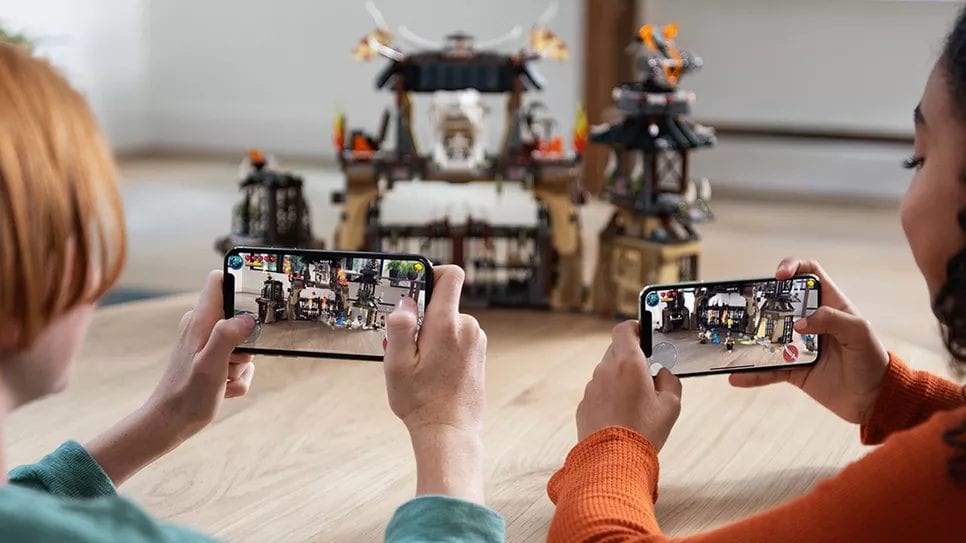
Image credit: Apple Inc
The youngest generations are digital natives.They have been caught trying to scroll or swipe through newspapers and run through museums and field trips, experiencing the world through the lens of their mobile devices. This generation loves to take pictures and videos of everything to share with their friends, before dashing off to the next adventure.
Gen Z (ages 8–25) and Gen Alpha (ages 1–7), are growing up accustomed to digital experiences that go beyond the limitations of a 2D screen. Virtual Reality, Augmented Reality, AR filters and digital venues are a norm- at their disposal for entertainment and education. As the summer approaches, kids are out of school and out of camps. Retailers for kids toys, accessories, and everyday items are rethinking digital strategy and engagement for audiences at home. It’s an exciting time for us all to explore the potential of WebAR, for everyone.
Education
Augmented Reality enables interactivity in learning that other media have only come close to providing. Today, Augmented Reality is a powerful tool to help students achieve deeper learning with access to 3D models, and hands-on learning experiences that would otherwise be largely unattainable in physical form.
For example, the Merge Cube lets students hold the digital world in their hands, from fossils to ancient artifacts and anatomy models. The diversity of experiences available in comparison to physical models is truly limitless.
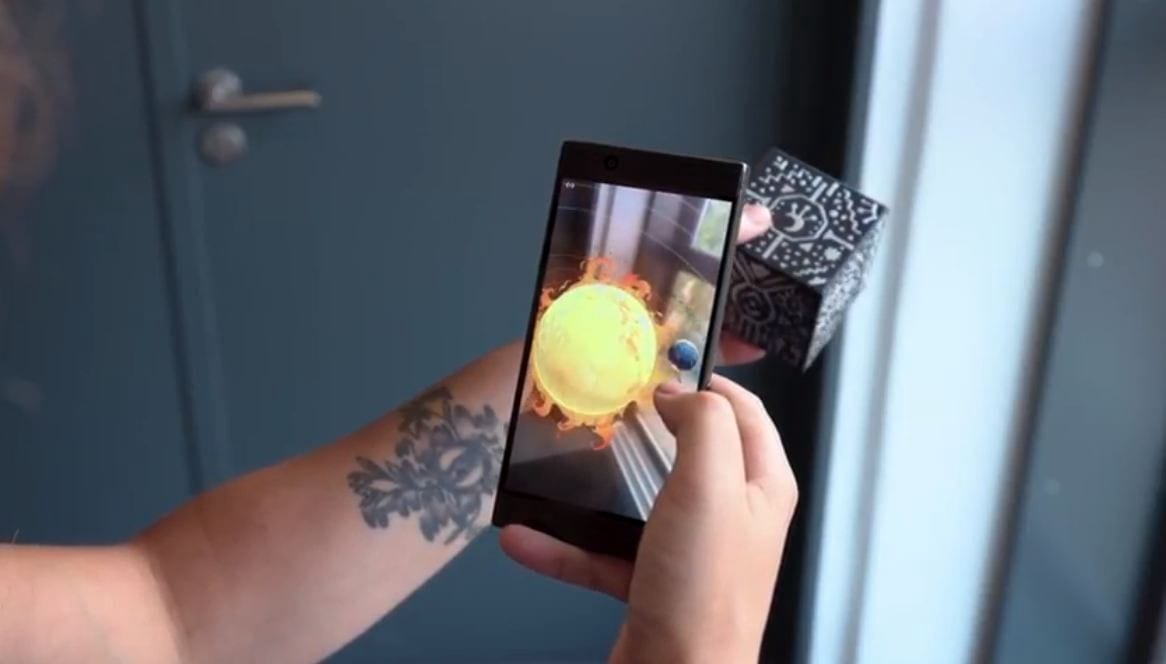
Image Credit: VRrOOm
WebAR makes these types of experiences even more accessible. It requires no app, and no physical object. An experience is activated directly through the browser, and through image recognition technology that can be initiated by a physical or digital image, accessed through any mobile device.
Without a teacher to directly guide students each day during social distancing, it has become even more important for students to be engaged in learning material. Studies have shown that students who have behavioral issues in a traditional classroom setting become more engaged and motivated to learn when a teacher begins using AR to demonstrate more abstract concepts.
In a four week study on AR in the classroom, 90% of students found that the iPad-enabled AR tools were fun and easy to use, and 80% of students felt that the iPad-enabled AR tools helped to strengthen their reading, writing and math skills. For children with disabilities, AR can tailor each page to help kids improve their reading skills. Outside of the classroom, AR is an incredible take-home resource that can be shared with family and friends. It encourages collaboration, extends playtime, and appeals to visual, kinesthetic and auditory learners.
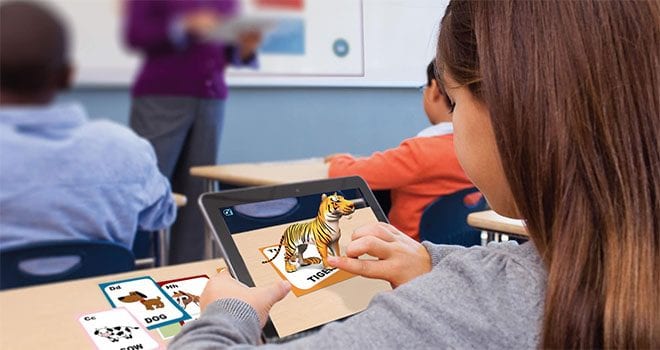
Image Credit: Virtual Speech
Entertainment
Outside of fun in the classroom, an entirely new dimension of storytelling and games are waiting to be discovered in WebAR — a medium that needs its own space to tell a story that has never been told before. WebAR can bring traditional posters, videos, social content and pages to life, showcase bonus material or inspire with discovery games related to classics such as Star Wars, Frozen, Toy Story and How to Train Your Dragon. WebAR is accessible for all ages, especially younger digital natives who understand and expect a variety of new content to be available at any time. As for privacy — we’ve got you covered with our latest post.
Recently, Geenee has been exploring WebAR portals. We love the idea of being able to open a window to anywhere in this world, or another, through our mobile devices. Think of the Chronicles of Narnia, that took the simple concept of opening a door into a new world, and inspired children and adults across the globe. What we aim to do with WebAR is bring content to life at the moment of inspiration. There are so many ways that audiences connect with content, and WebAR is the glue between them all.
WebAR can also be activated by everyday items such as cereal boxes, books, posters, toys, pictures, stickers, coloring books and on screen images. By adding a new dimension to physical and digital content, it suddenly becomes possible to cut through the clutter and reach your audience in exciting ways.
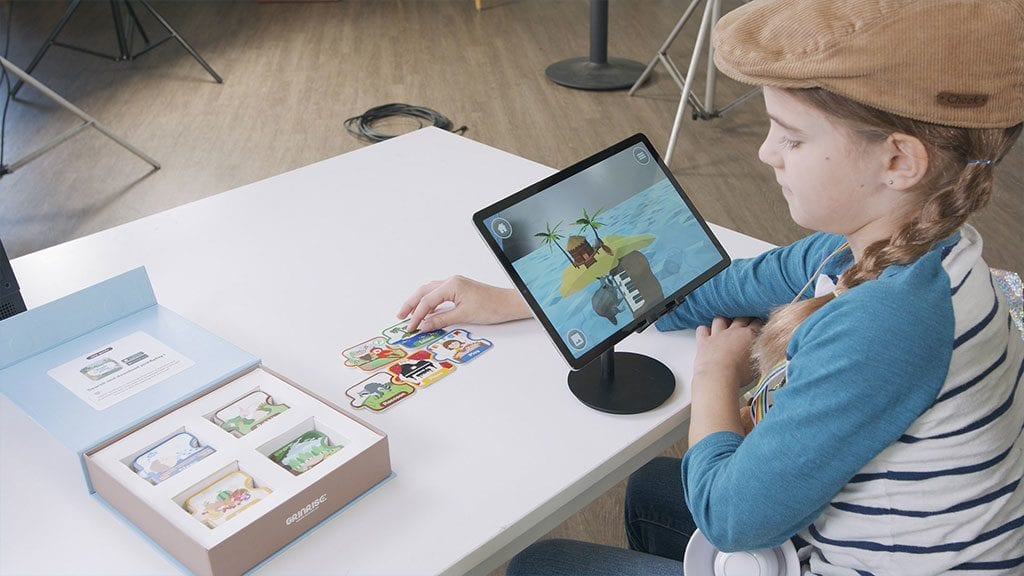
Image credit: The Toy Insider, Grinris (AR)-based animation kit offers kids the chance to make their own stories
Toys
Speaking of Toy Story, toys are a fantastic example of old and new objects that can be brought to life with WebAR. In Toy Story, the toys only come to life when no one is looking, but with WebAR, they are not camera shy. In the Toy Story AR Book, kids turn the pages to interact with their favorite characters in 3D WebAR animations. When it comes to physical toys, rather than books, these can also act as markers for WebAR.
Also important, is that younger audiences want to feel connected to their superheroes. WebAR can enable photo opportunities with characters that can be shared with friends, and families, and looked back upon years later as fond memories. Our favorite stories growing up stick with us for a lifetime, and WebAR can help your story stand out. Kids today have high expectations for physical and digital goods, and AR can add an extra layer of interactivity. It’s social, shareable and memorable.
In many countries, families are also emerging from lockdowns. While big stores are closed, window shopping has become an experience in itself. Harrods for example, that offers a wealth of games and activities through its doors, is also known for its wondrous displays that stand out to passerbys. The entire window and contents within can be a portal or WebAR activation to an online store or game.
Just because physical doors are closed, doesn’t mean that virtual ones can’t open.
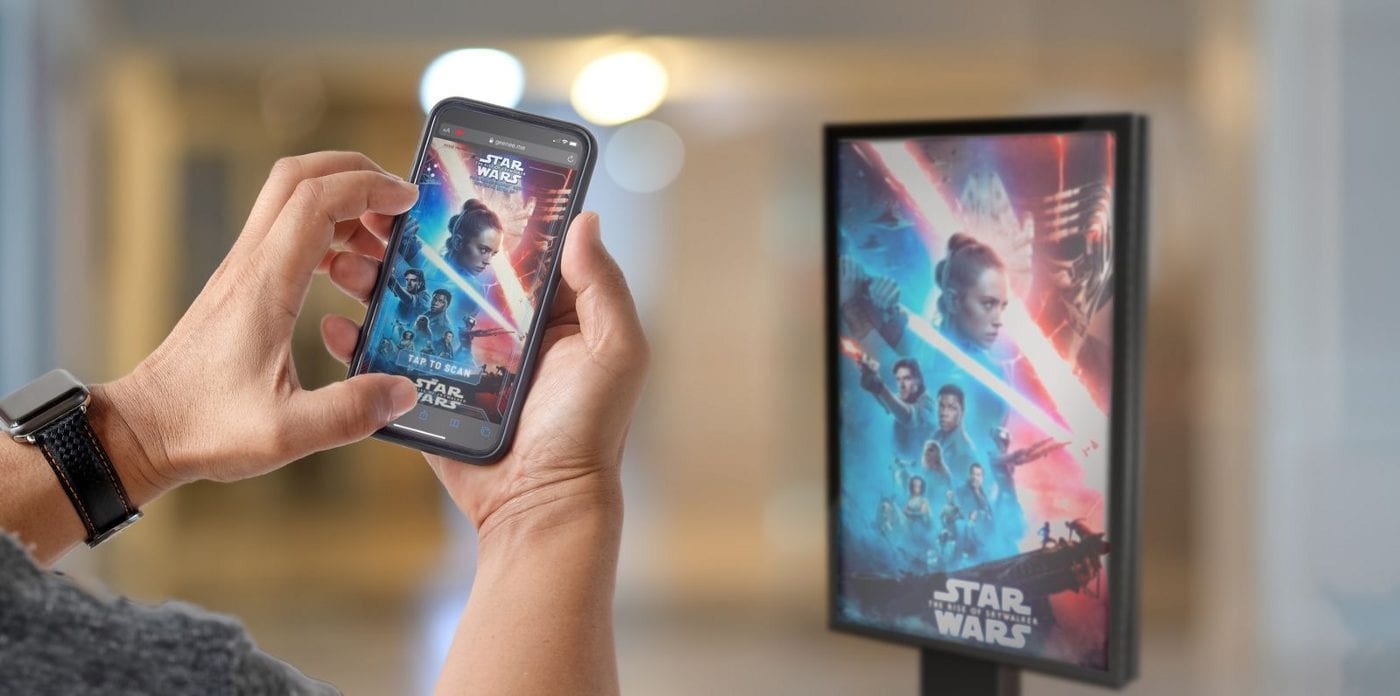
Geenee’s WebAR activation for Star Wars. You can try it out here.
A New Narrative for the Next Generation
WebAR achieves its most exciting moments when it’s given its own space to tell new stories. It’s a powerful medium that holds attention for longer, shows higher engagement, and acts as the glue between digital platforms and the physical word. From education to entertainment and toys, there are so many possibilities where your brand can reach a global audience. Museums, galleries, and amusement parks are just a few locations where WebAR can bring the space to life. If you have any questions about WebAR or how WebAR can be a part of your growth strategy, don’t hesitate to reach out to our team at contact[at] geenee [dot] me.
Engage & Monetize Your Audience with Immersive WebAR Experiences
Be the first to try Geenee WebAR